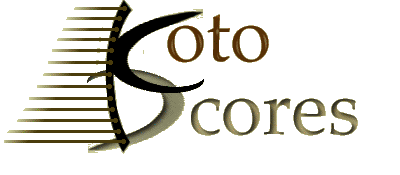|
The koto has 13 strings, each of which can be tuned to nearly any
pitch. The tunings hirajoshi and kumoijoshi are two traditional tunings for solo
koto repertoire which were developed in the 17th century. In the
19th century, the tunings gakujoshi
and nogijoshi were introduced into solo
koto performance practice for accompanying folksongs and other
popular songs.
Here is list of standard koto tunings:
| string: |
|
1 |
2 |
3 |
4 |
5 |
6 |
7 |
8 |
9 |
10 |
11 |
12 |
13 |
| Hira-choshi |
|
D4 |
G3 |
A3 |
Bb3 |
D4 |
Eb4 |
G4 |
A4 |
Bb4 |
D5 |
Eb5 |
G5 |
A5 |
| Kumoi-choshi |
|
D4 |
G3 |
Ab3 |
C4 |
D4 |
Eb4 |
G4 |
Ab4 |
C5 |
D5 |
Eb5 |
G5 |
A5 |
| Hon-kumoi-choshi (original kumoi-choshi) |
|
D4 |
G3 |
Ab3 |
C4 |
D4 |
Eb4 |
G4 |
Ab4 |
C5 |
D5 |
Eb5 |
G5 |
Ab5 |
| Nogi-choshi |
|
D4 |
G3 |
A3 |
B3 |
D4 |
E4 |
G4 |
A4 |
B4 |
D5 |
E5 |
G5 |
A5 |
| Gaku-choshi |
|
D4 |
G3 |
A3 |
C4 |
D4 |
E4 |
G4 |
A4 |
C5 |
D5 |
E5 |
G5 |
A5 |
| Kokin-choshi |
|
D4 |
G4 |
A3 |
C4 |
D4 |
Eb4 |
G4 |
A4 |
C5 |
D5 |
Eb5 |
G5 |
A5 |
| Iwato-choshi (Ikuta school) |
|
D4 |
G3 |
Ab3 |
C4 |
Db4 |
F4 |
G4 |
Ab4 |
C5 |
Db5 |
F5 |
G5 |
Ab5 |
| Nakazora-choshi (Ikuta school) |
|
D4 |
G3 |
A3 |
Bb3 |
D4 |
E4 |
F4 |
A4 |
Bb4 |
D5 |
E5 |
F5 |
A5 |
|

